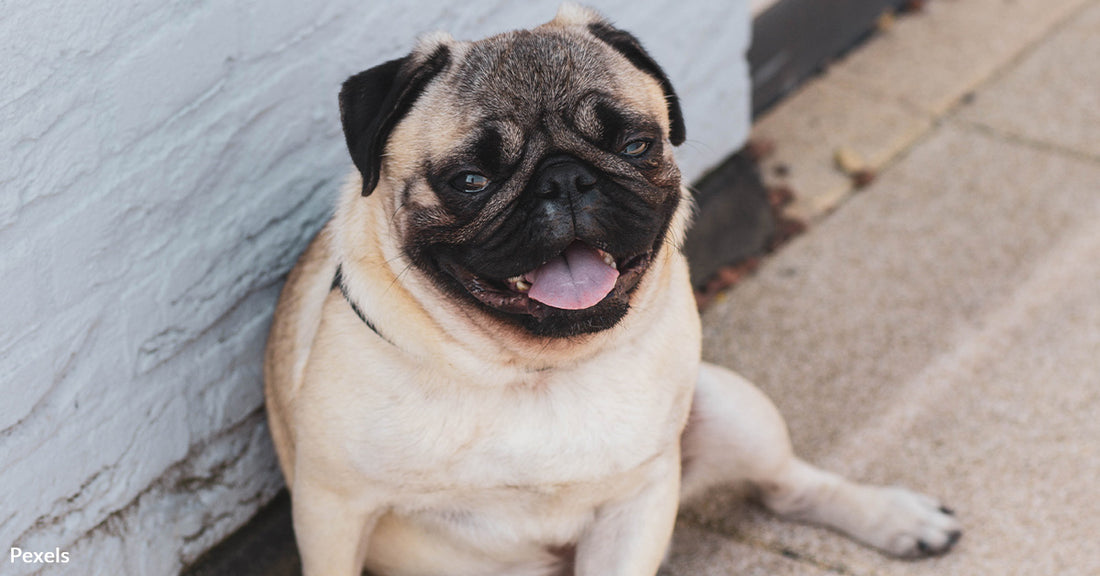Climate Change Will Affect These Breeds The Worst - Here's What To Do
Matthew Russell
Climate change is affecting not only humans but also our furry friends. As global temperatures continue to rise, certain dog breeds face unique challenges that can be life-threatening. Bulldogs, pugs, and Boston terriers, affectionately known as brachycephalic breeds, are particularly vulnerable to the changing climate.
Understanding the reasons behind the susceptibility of various dog breeds to climate change is one step in ensuring their future well-being.
 Photo: Pexels
Photo: PexelsClimate change affects pets as rising temperatures can lead to heat-related illnesses and discomfort in pets.
Why Are Brachycephalic Breeds at Risk?
Brachycephalic dogs have distinctive flat faces and short snouts, a look achieved through selective breeding for aesthetic purposes rather than functionality. This breeding trend has left these breeds with narrowed nostrils, elongated soft palates, and narrowed windpipes, limiting their ability to thermoregulate effectively, reports Virginia Tech. Unlike humans who sweat to cool down, dogs rely on panting as their primary cooling mechanism.
Dr. Lisa Gunter, an expert in Animal Behavior & Welfare and an assistant professor in the School of Animal Science at Virginia Tech, explains, “These physical limitations make breathing difficult, causing these breeds to be particularly susceptible to heatstroke more so than other dogs in surprisingly mild weather and humidity.”
 Photo: Pexels
Photo: PexelsPets, especially brachycephalic breeds, are vulnerable to heatstroke due to their limited ability to cool down.
When animals have trouble breathing, it can also reduce the oxygen in their blood. This puts extra strain on the hearts of brachycephalic dogs, making them more prone to heart issues, Gunter says.
“All dog owners, but especially those of brachycephalic dog breeds, have to be incredibly careful about the most quintessential dog-owner activity in extreme heat: dog walking,” she continues.
The type of sweltering heat that is more typical in the Southwest United States is spreading across North America as climate change worsens, which could turn deadly for these breeds.
“Owners of brachycephalic dogs need to be much more aware of the heat and its devastating effects than typical dog owners,” Gunter says. “Seemingly routine activities with brachycephalic dogs, like a mid-day potty break in the backyard or coming along on a car ride, can be deadly in extreme heat if they’re accidentally forgotten about or closed in a space without air conditioning for just a few minutes.”
A scientific study published in Nature further shows how Brachycephalic breeds like Bulldogs are at higher risk of heat-related illness due to their distinctive skull shape.
 Photo: Pexels
Photo: PexelsIncreased heatwaves put pets at risk of overheating, leading to potentially life-threatening conditions.
The Impact of Climate Change
The warming climate poses a significant threat to these breeds. As temperatures rise, dogs are at risk of overheating and potentially collapsing or, in extreme cases, facing fatal heat-related illnesses. In the hottest year on record globally, the UK alone saw 395 dogs receive veterinary care for heat-related issues, with a 14% mortality rate, reports Bloomberg.
Ensuring Their Safety
If you own or are considering adopting a brachycephalic breed, there are essential steps to protect them in the face of climate change:
1. Be Mindful of the Heat
Brachycephalic dogs should not be exposed to temperatures exceeding 91°F and 62% humidity, Dr. James A. Serpell, professor of Ethics & Animal Welfare at the University of Pennsylvania School of Veterinary Medicine, told Salon. Pay attention to the weather and avoid outdoor activities during the hottest parts of the day.
 Photo: Pexels
Photo: PexelsProlonged exposure to extreme heat can cause heat exhaustion and heatstroke in dogs and cats.
2. Stay Hydrated
Always carry water and a bowl for your dog, no matter how short the outing. Dehydration can exacerbate heat-related issues, reports the American Kennel Club.
3. Watch Their Weight
Maintaining a healthy weight is crucial. Overweight brachycephalic dogs are more susceptible to heat-related problems, reports Purina.
 Photo: Pexels
Photo: PexelsProtecting pets from the impacts of climate change requires awareness, preparedness, and responsible ownership.
4. Regular Exercise and Vet Check-ups
VCA Hospitals recommends engaging your dog in low-impact exercises and ensure regular veterinary check-ups to detect and address breathing problems.
5. Adopt, Don't Shop
Consider adopting from rescues if you're thinking about bringing a brachycephalic breed into your family.
Climate change is a pressing concern, and our responsibility to safeguard the well-being of our four-legged companions is equally crucial. Let us unite to address the challenges of extreme heat and pollution forging a path toward a resilient and thriving society that prioritizes both human and pet health. Together, we can create a safer and more sustainable world for generations to come.
Click below to make a commitment to the health of people and pet everywhere. Take the Cool, Clean, and Caring Pledge pledge to ensure a healthier future for all!

